Europe leans in to help establish Neutrons Canada
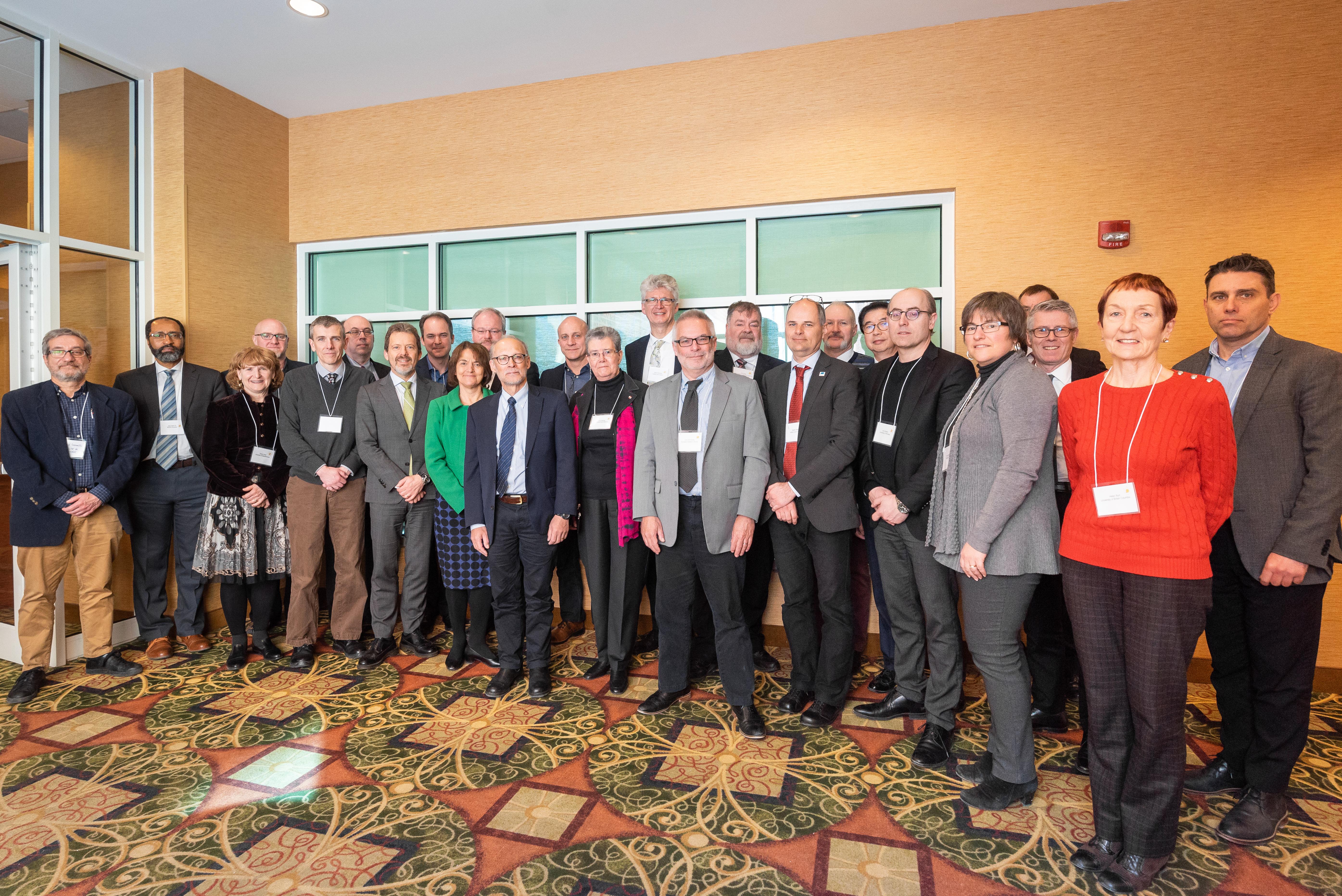
OTTAWA—The anticipated March 2018 closure of Canada’s primary domestic neutron source, the National Research Universal (NRU), mobilised the Canadian scientific community to explore new possibilities for Canada’s stewardship of resources for materials research with neutron beams. A small number of academic and industrial executives formed a working group, named the Canadian Neutron Initiative (CNI), to establish a new framework for operating Canada’s neutron program at distributed facilities both domestic and foreign for the next decade or more.
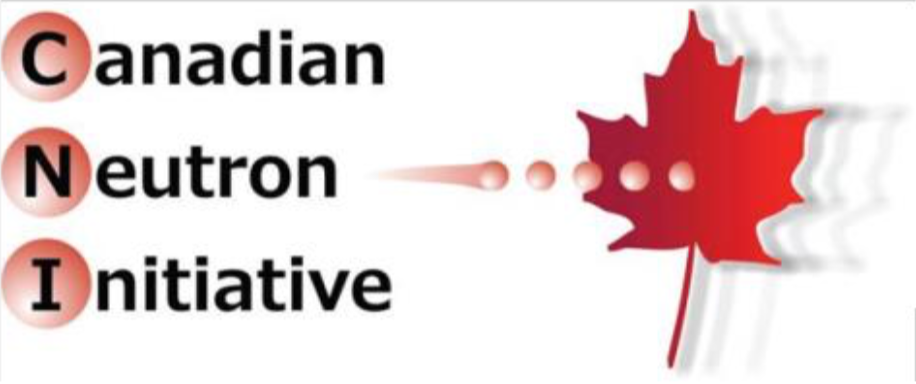 |
On Wednesday, January 29, the CNI working group took a major step toward their goal. On behalf of the working group, the Sylvia Fedoruk Canadian Centre for Nuclear Innovation Inc (the Fedoruk Centre) partnered with BrightnESS² to organize a roundtable meeting of university executives to learn about the situation of Canada’s neutron beam community, and consider whether and how their institutions could participate in establishing a new organization, Neutrons Canada. Representatives from the European Spallation Source (ESS), France’s Institut Laue-Langevin (ILL) and the League of advance European Neutron Sources (LENS) were invited to enrich the discussion with their knowledge and experience of world-leading, multi-national facilities and partnerships.
“The roundtable meeting of university executives from 17 institutions across Canada was an historic moment, topping off five years of work to establish a new, pan-Canadian, university-led framework to govern, manage and represent Canada’s programme and capacity for materials research with neutron beams,” said Dr. Karen Chad, Vice-President of Research at the University of Saskatchewan and chair of the CNI working group.
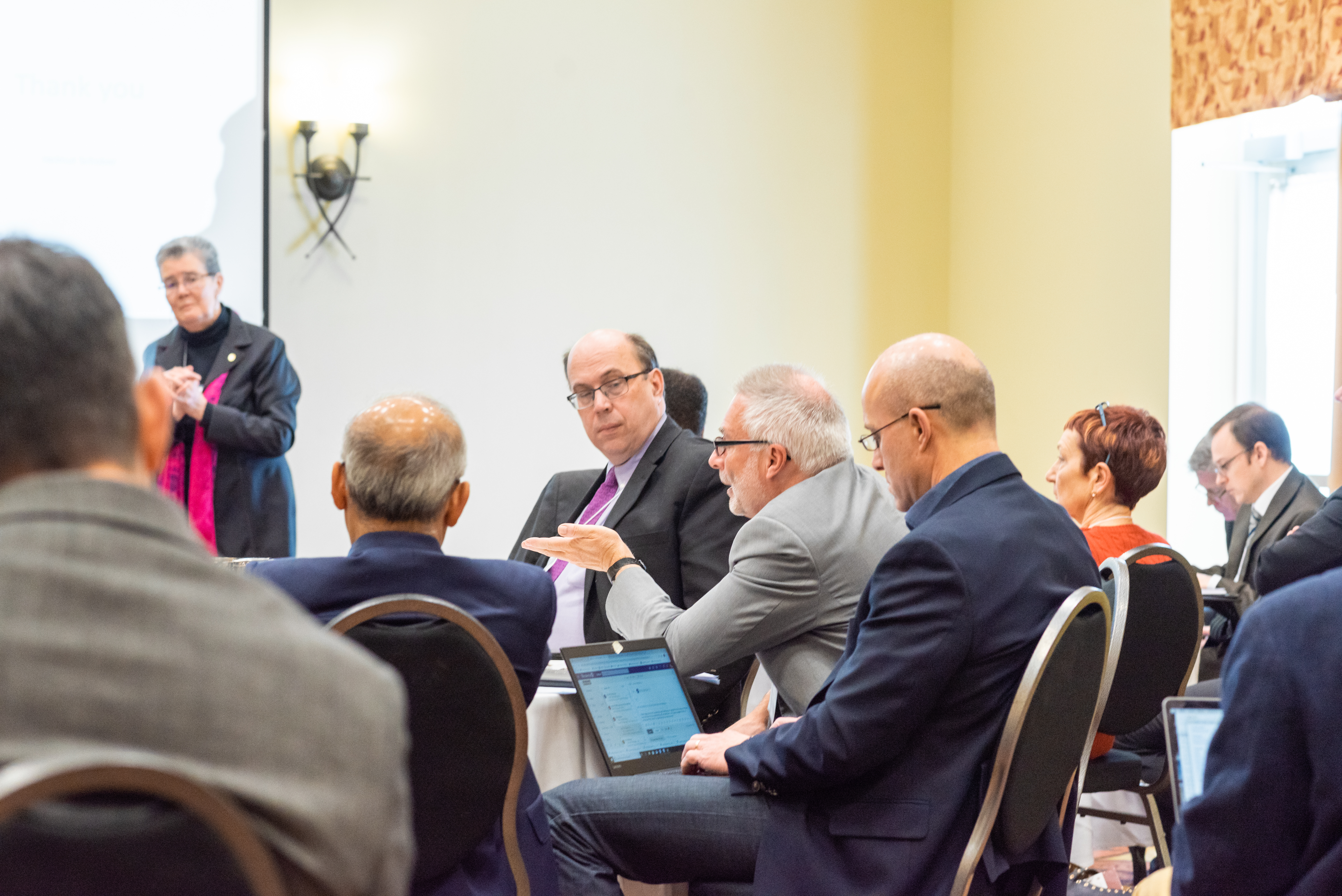 |
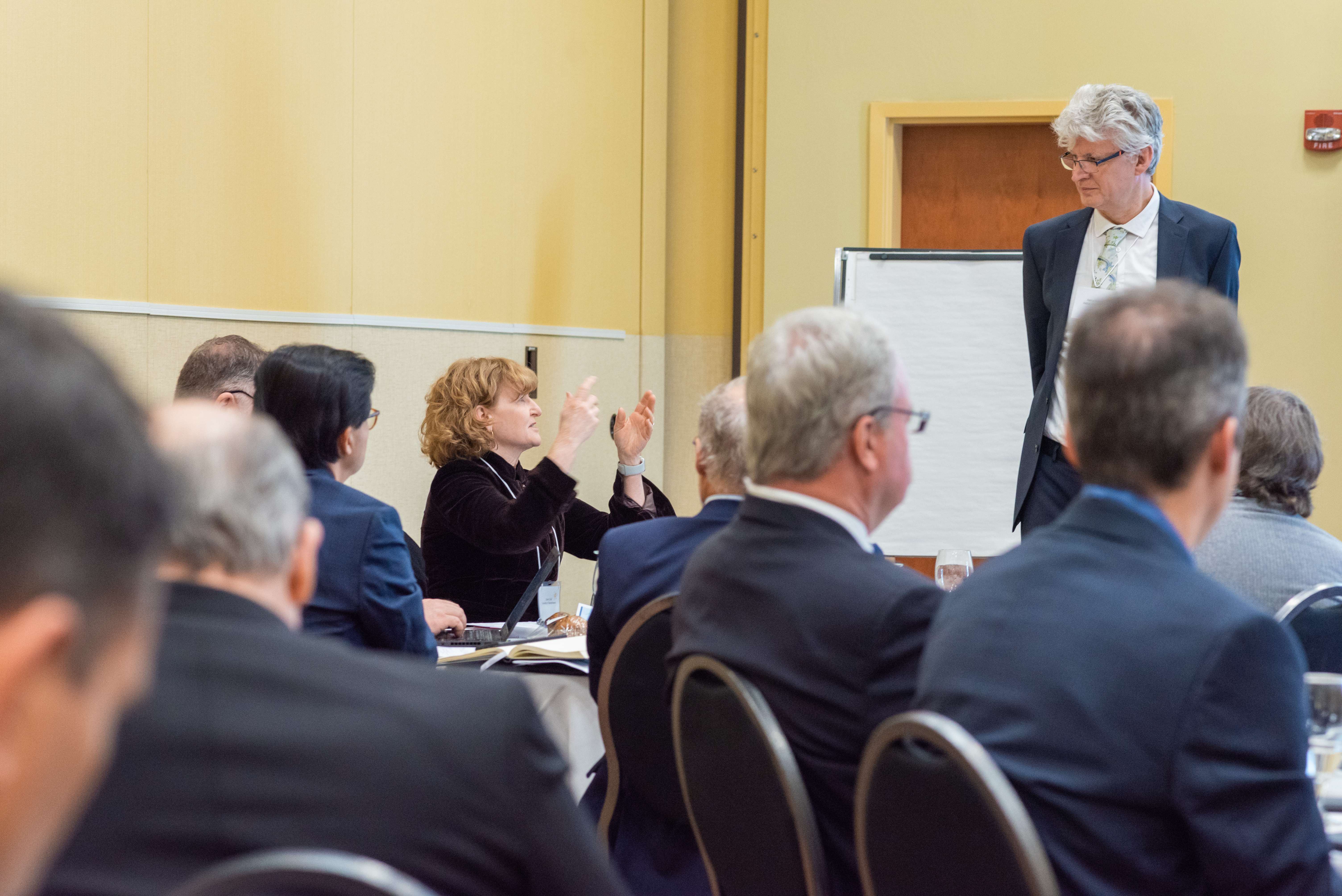 |
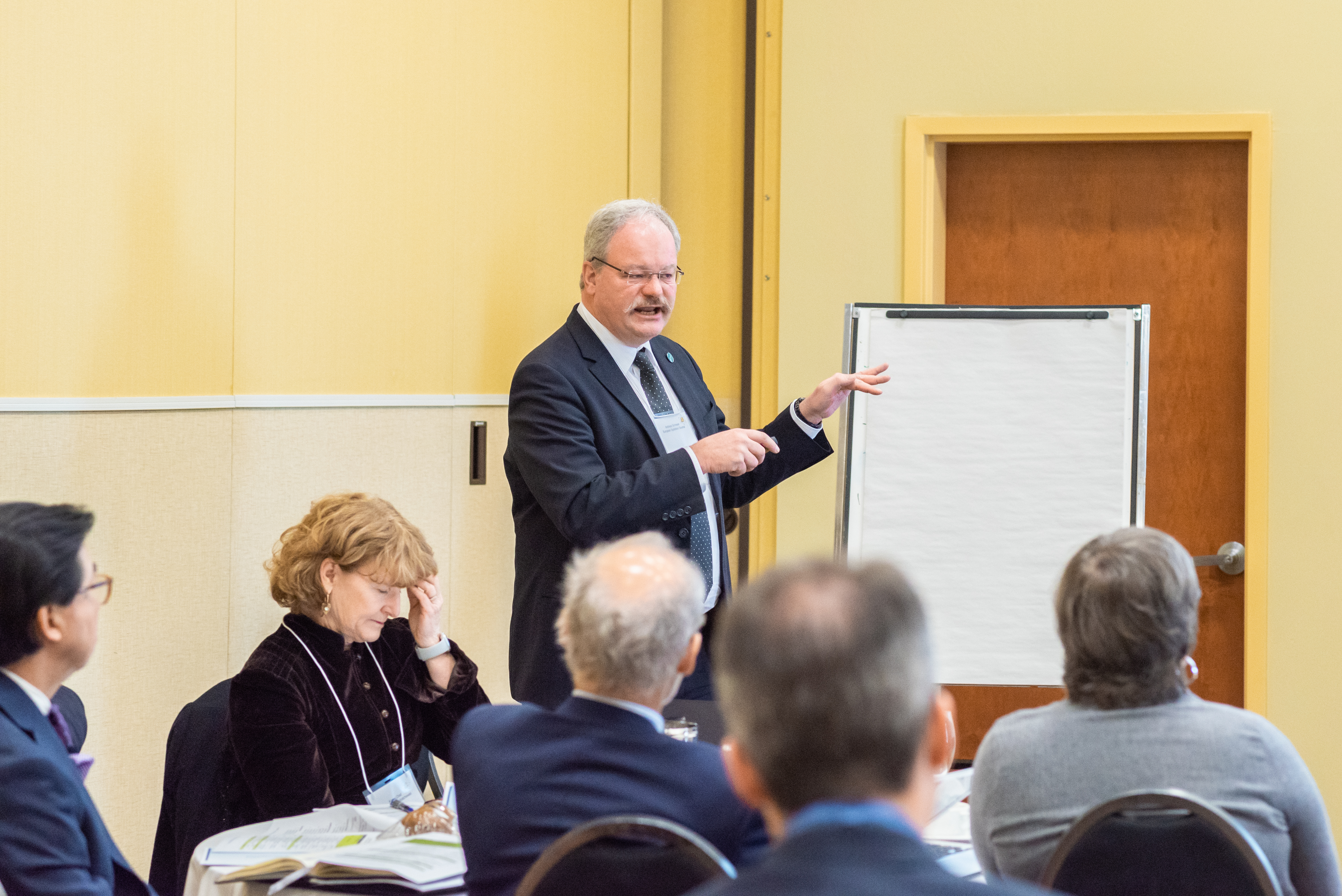 |
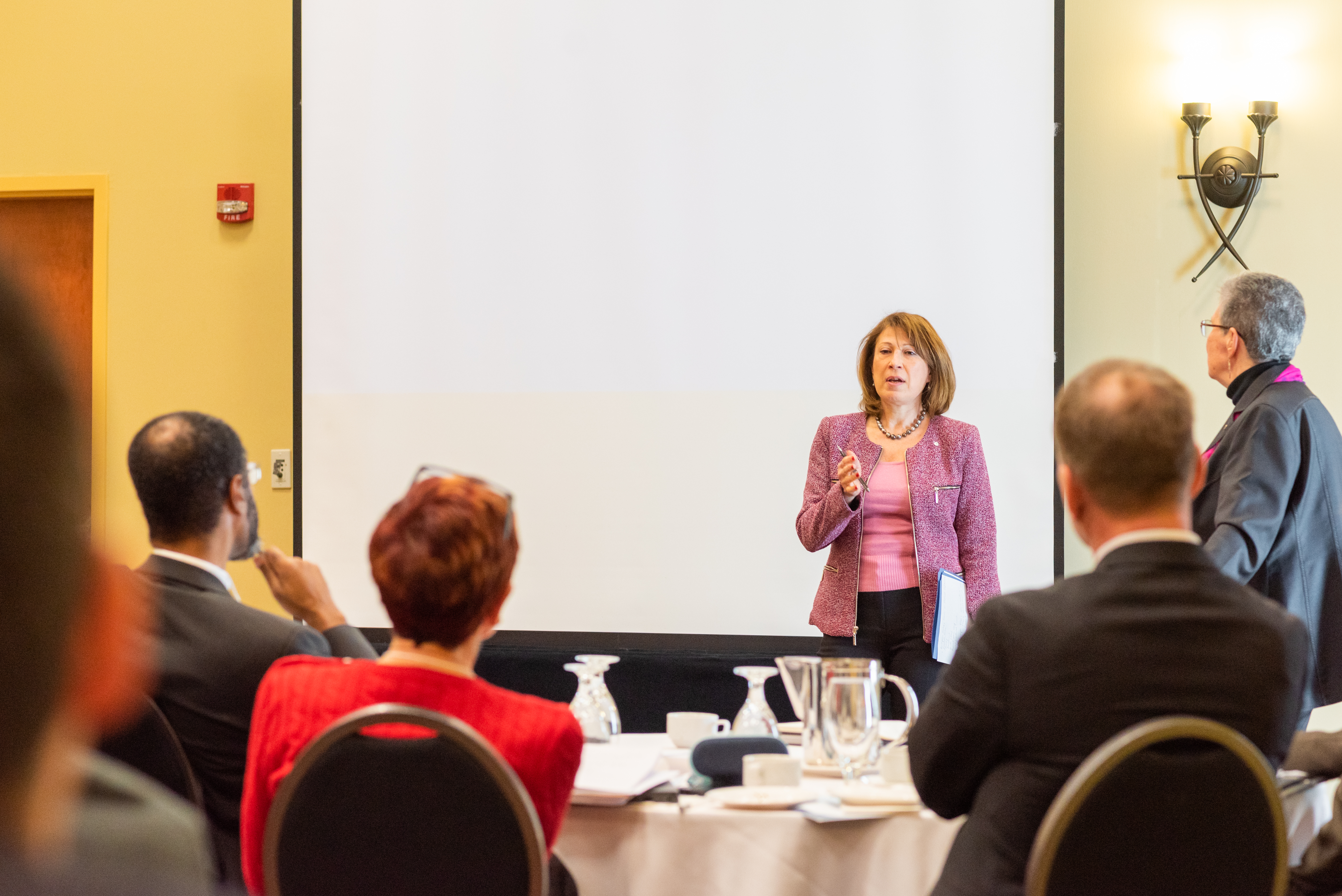 |
Clockwise from top left: John Womersley in discussion (ESS), Helmut Schober (ILL, LENS) taking questions, Mona Nemer, Chief Science Advisor of Canada, addressing the meeting, and Andreas Schreyer (ESS) giving a presentation. Credit: Fedoruk Centre
Trans-Atlantic exchange
The EU-funded project BrightnESS (2015-2018), played an instrumental role in establishing contacts between ESS and the Canadian research community. Within the framework of the project, a delegation of Canadian neutron scientists visited ESS in November 2017 to explore opportunities for cooperation.
“As an international research infrastructure, ESS is built with the support and expertise of more than 100 collaborators from around the world. Our interactions with the Canadian research community are a natural development. We strive to support the neutron users in Canada by exploring opportunities for collaboration and sharing the European experience with implementing multi-partner projects,” said John Womersley, ESS Director General. His talk in Ottawa focused on the management of large-scale research infrastructures in Europe and provided input for discussions among the Canadian delegations.
ESS Director for Science Andreas Schreyer and ILL Director Helmut Schober were also on hand to discuss collaboration opportunities between Canada and the two European neutron sources. In addition, Schober reviewed the process of establishing LENS in Europe, and shared what activities the consortium has initiated to sustain the world-leading ecosystem of neutron facilities across the Atlantic.
“We were very grateful to be joined by experts from ESS and ILL to help our university leaders envision a future where a new organisation, such as the proposed Neutrons Canada, could partner with world-class neutron beam facilities and enable Canadians to continue contributing to the leading edge of materials research with neutron beams,” said Dr. John Root, Executive Director of the Fedoruk Centre.
The collaboration between the Fedoruk Centre and BrightnESS² will continue through 2020 in order to coordinate further outreach and engagement activities in Canada.
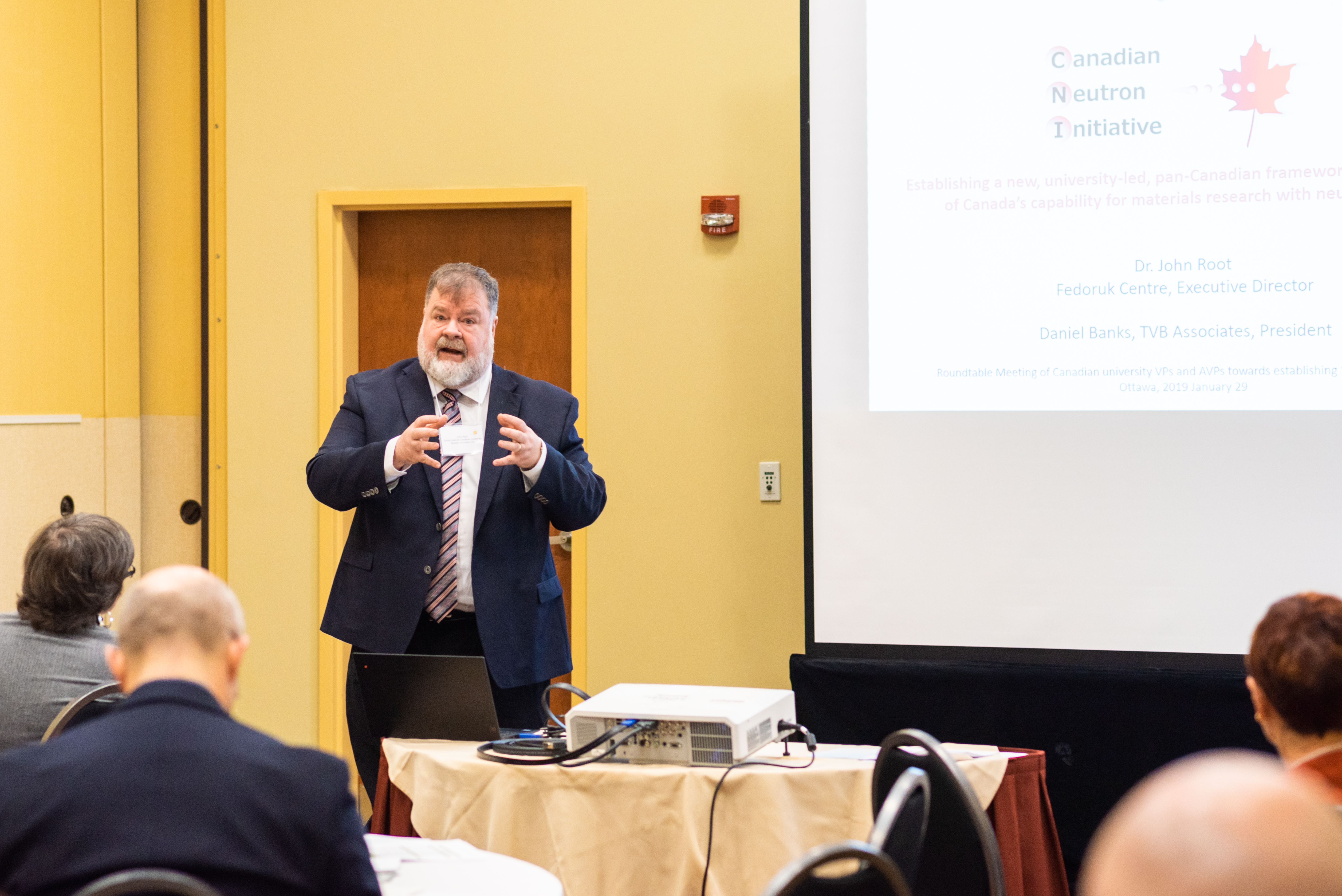 |
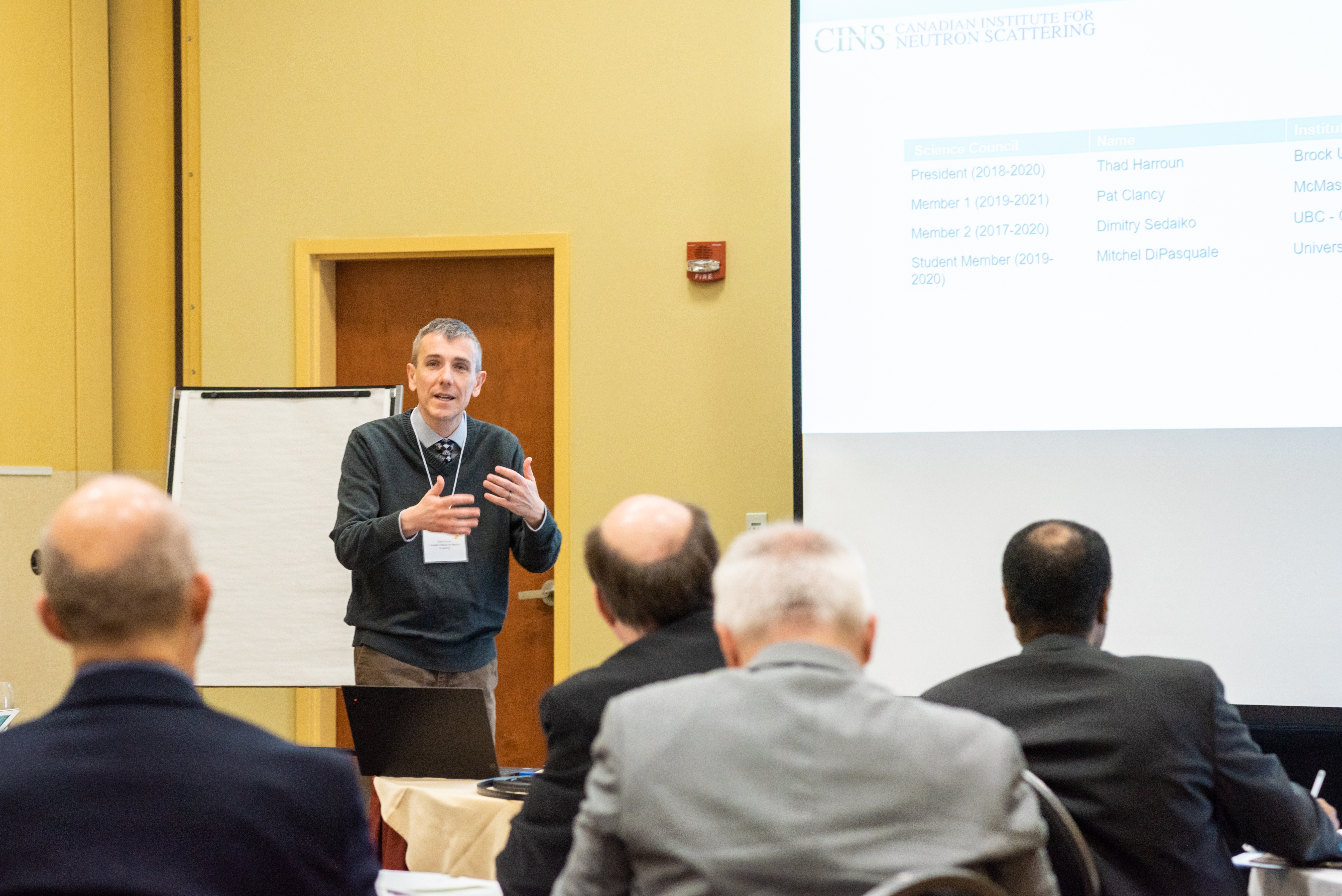 |
John Root (Fedoruk Centre), left, and Thad Harroun (Brock University). Credit: Fedoruk Centre

